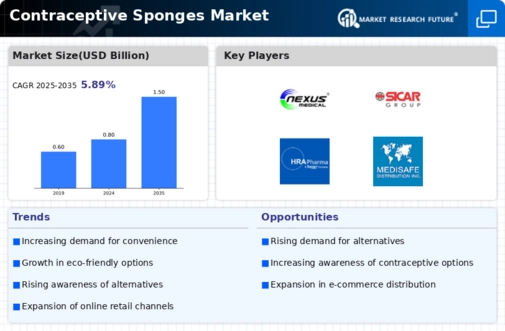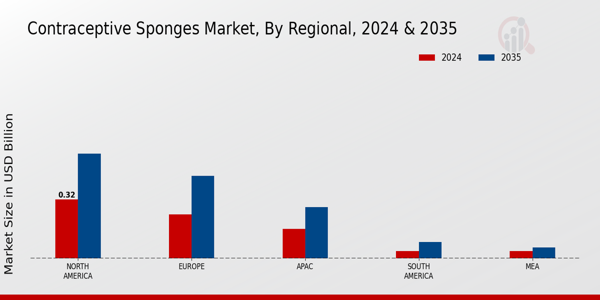Rising Focus on Sexual Health Education
The Contraceptive Sponges Market is benefiting from an increased emphasis on sexual health education across various regions. Educational initiatives aimed at informing individuals about reproductive health and contraceptive options are gaining traction. This focus is likely to empower consumers to make informed choices regarding their contraceptive methods. Data suggests that regions with comprehensive sexual health education programs report higher usage rates of contraceptive methods, including sponges. As educational efforts continue to expand, the Contraceptive Sponges Market may witness a corresponding rise in product adoption, as consumers become more knowledgeable about the benefits and proper usage of contraceptive sponges.
Increased Demand for Non-Hormonal Options
The Contraceptive Sponges Market is experiencing a notable shift towards non-hormonal contraceptive methods. This trend is largely driven by consumers seeking alternatives to hormonal birth control due to concerns over side effects and long-term health implications. Research indicates that approximately 30% of women prefer non-hormonal options, which positions contraceptive sponges as a viable choice. The convenience and ease of use associated with sponges further enhance their appeal, particularly among younger demographics. As awareness of reproductive health options expands, the demand for contraceptive sponges is likely to grow, potentially leading to increased market penetration and product innovation within the Contraceptive Sponges Market.
Influence of Social Media and Influencers
The Contraceptive Sponges Market is increasingly influenced by social media platforms and the rise of influencers advocating for reproductive health. Social media serves as a powerful tool for disseminating information about contraceptive options, including sponges. Influencers often share personal experiences and recommendations, which can significantly impact consumer perceptions and choices. This trend suggests that as more individuals engage with content related to sexual health on social media, the visibility and acceptance of contraceptive sponges may increase. Consequently, the Contraceptive Sponges Market could see a boost in demand as consumers turn to these platforms for guidance and information.
Growing E-commerce and Online Retail Channels
The Contraceptive Sponges Market is experiencing a transformation due to the proliferation of e-commerce and online retail platforms. The convenience of purchasing contraceptive products online appeals to a broad audience, particularly those who may prefer discretion in their shopping habits. Recent statistics indicate that online sales of contraceptive products have surged, with e-commerce accounting for a significant portion of overall sales. This shift not only enhances accessibility but also allows for a wider range of product options to be available to consumers. As online retail continues to expand, the Contraceptive Sponges Market is likely to benefit from increased visibility and sales opportunities.
Regulatory Changes Favoring Contraceptive Options
The Contraceptive Sponges Market is poised for growth due to favorable regulatory changes that promote access to a variety of contraceptive options. Governments and health organizations are increasingly recognizing the importance of providing diverse contraceptive methods to meet the needs of different populations. Recent policy shifts have led to improved access to contraceptive products, including sponges, in various markets. This regulatory support not only enhances availability but also encourages manufacturers to innovate and expand their product lines. As regulations continue to evolve, the Contraceptive Sponges Market may experience a surge in product offerings and consumer adoption.
















Leave a Comment